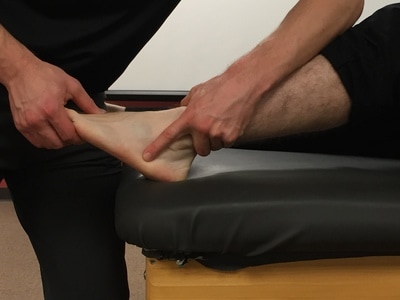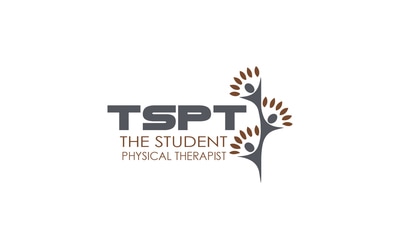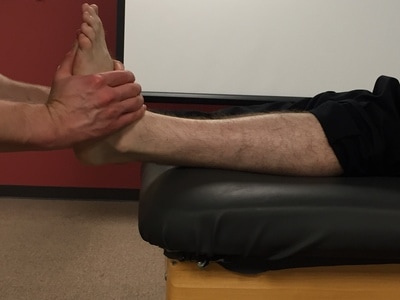- Home
- About Us
- TSPT Academy
- Online Courses
-
Resources
- Newsletter
- Business Minded Sports Physio Podcast
- Day in the Life of a Sports PT
- Residency Corner
-
Special Tests
>
-
Cervical Spine
>
- Alar Ligament Test
- Bakody's Sign
- Cervical Distraction Test
- Cervical Rotation Lateral Flexion Test
- Craniocervical Flexion Test (CCFT)
- Deep Neck Flexor Endurance Test
- Posterior-Anterior Segmental Mobility
- Segmental Mobility
- Sharp-Purser Test
- Spurling's Maneuver
- Transverse Ligament Test
- ULNT - Median
- ULNT - Radial
- ULNT - Ulnar
- Vertebral Artery Test
- Thoracic Spine >
-
Lumbar Spine/Sacroiliac Joint
>
- Active Sit-Up Test
- Alternate Gillet Test
- Crossed Straight Leg Raise Test
- Extensor Endurance Test
- FABER Test
- Fortin's Sign
- Gaenslen Test
- Gillet Test
- Gower's Sign
- Lumbar Quadrant Test
- POSH Test
- Posteroanterior Mobility
- Prone Knee Bend Test
- Prone Instability Test
- Resisted Abduction Test
- Sacral Clearing Test
- Seated Forward Flexion Test
- SIJ Compression/Distraction Test
- Slump Test
- Sphinx Test
- Spine Rotators & Multifidus Test
- Squish Test
- Standing Forward Flexion Test
- Straight Leg Raise Test
- Supine to Long Sit Test
-
Shoulder
>
- Active Compression Test
- Anterior Apprehension
- Biceps Load Test II
- Drop Arm Sign
- External Rotation Lag Sign
- Hawkins-Kennedy Impingement Sign
- Horizontal Adduction Test
- Internal Rotation Lag Sign
- Jobe Test
- Ludington's Test
- Neer Test
- Painful Arc Sign
- Pronated Load Test
- Resisted Supination External Rotation Test
- Speed's Test
- Posterior Apprehension
- Sulcus Sign
- Thoracic Outlet Tests >
- Yergason's Test
- Elbow >
- Wrist/Hand >
- Hip >
- Knee >
- Foot/Ankle >
-
Cervical Spine
>
- I want Financial Freedom
- I want Professional Growth
- I want Clinical Mastery
Navicular Drop Test
Purpose: To assess the height of the navicular bone.
Test Position: Standing.
Performing the Test: First, mark the navicular tuberosity. Next, measure the height of the navicular bone with the subtalar joint in neutral and the patient bearing most of the weight on the contralateral limb. Finally, have the patient assume equal weight on both feet and remeasure the height of the navicular. The difference between the first and second measurement is the navicular drop. A difference of >10 mm is considered significant excessive foot pronation.
Diagnostic Accuracy: Intra-examiner: .33-.9; Inter-examiner: .31-.74.
Importance of Test: The medial longitudinal arch is the primary shock absorber and load-bearing structure of the foot. Without this arched configuration, large forces at the foot would exceed the physiologic weight bearing capabilities of the tarsal bones. During the navicular drop test, the examiner is first measuring the height of the navicular bone without the subject's body weight pushing down on the medial longitudinal arch. Because the arch should have some flexibility, the examiner should expect a decreased navicular height when the subject places his/her full body weight on the medial longitudinal arch. While >10 mm difference is considered excessive foot pronation, there is also speculation that <5 mm of navicular drop could be associated with a limited foot type or a supinated foot. Specific criteria for a supinated foot has not been well established.
Note: these tests should only be performed by a properly trained health care practitioner.
Test Position: Standing.
Performing the Test: First, mark the navicular tuberosity. Next, measure the height of the navicular bone with the subtalar joint in neutral and the patient bearing most of the weight on the contralateral limb. Finally, have the patient assume equal weight on both feet and remeasure the height of the navicular. The difference between the first and second measurement is the navicular drop. A difference of >10 mm is considered significant excessive foot pronation.
Diagnostic Accuracy: Intra-examiner: .33-.9; Inter-examiner: .31-.74.
Importance of Test: The medial longitudinal arch is the primary shock absorber and load-bearing structure of the foot. Without this arched configuration, large forces at the foot would exceed the physiologic weight bearing capabilities of the tarsal bones. During the navicular drop test, the examiner is first measuring the height of the navicular bone without the subject's body weight pushing down on the medial longitudinal arch. Because the arch should have some flexibility, the examiner should expect a decreased navicular height when the subject places his/her full body weight on the medial longitudinal arch. While >10 mm difference is considered excessive foot pronation, there is also speculation that <5 mm of navicular drop could be associated with a limited foot type or a supinated foot. Specific criteria for a supinated foot has not been well established.
Note: these tests should only be performed by a properly trained health care practitioner.
References:
Flynn , Timothy. User's Guide to the Musculoskeletal Examination. Evidence in Motion, 2008. Print.
Neumann, Donald. Kinesiology of the Musculoskeletal System. Second . Mosby Publishing Inc., 2010. 609-613. Print.
Tiberio, David. "Pathomechanics of Structural Foot Deforities." Physical Therapy. 68. (1988): 1840-1849. Print.
Copyright © The Student Physical Therapist LLC 2023



